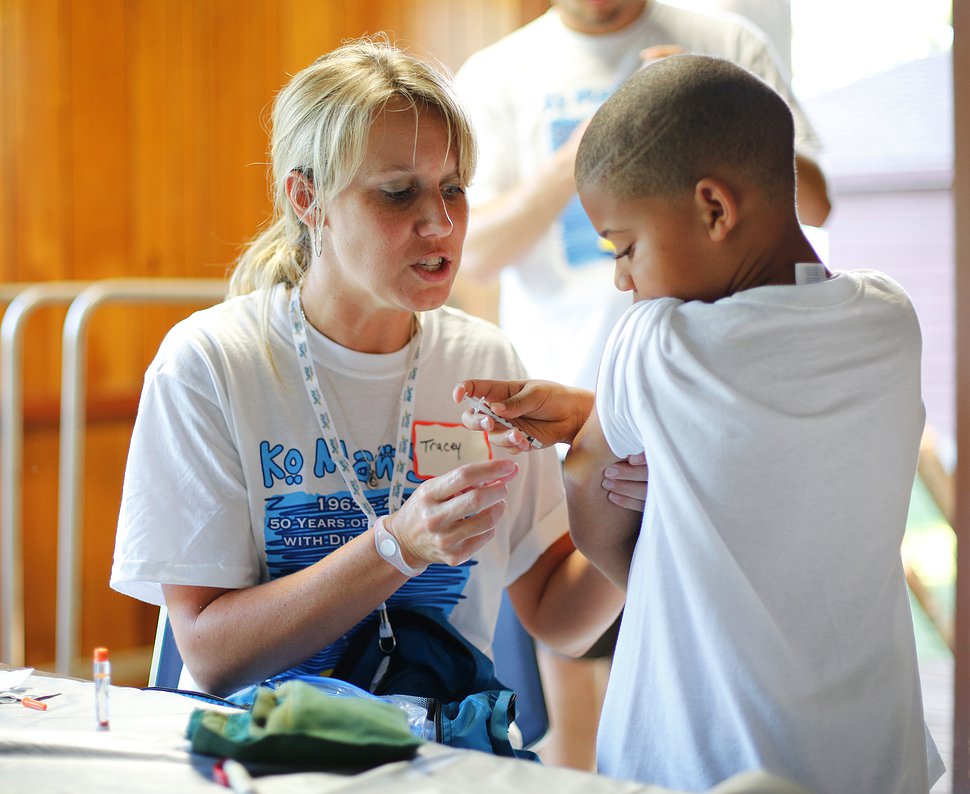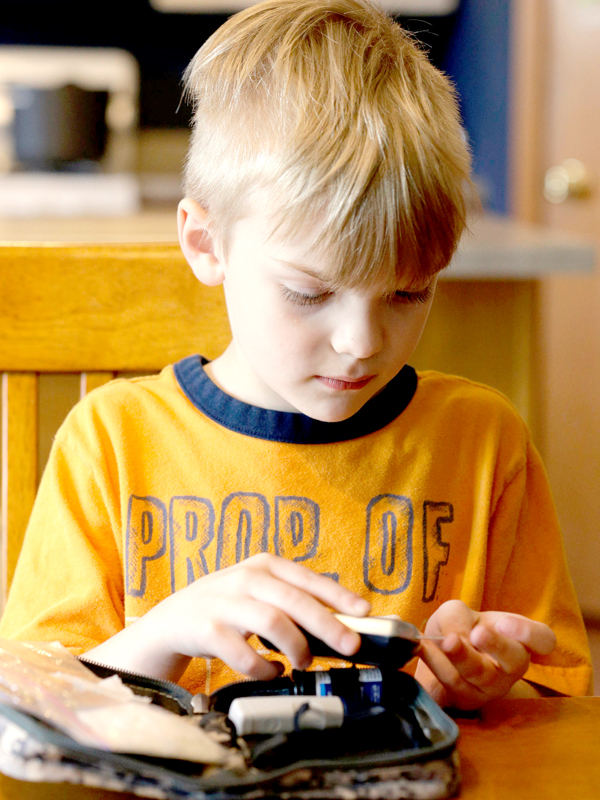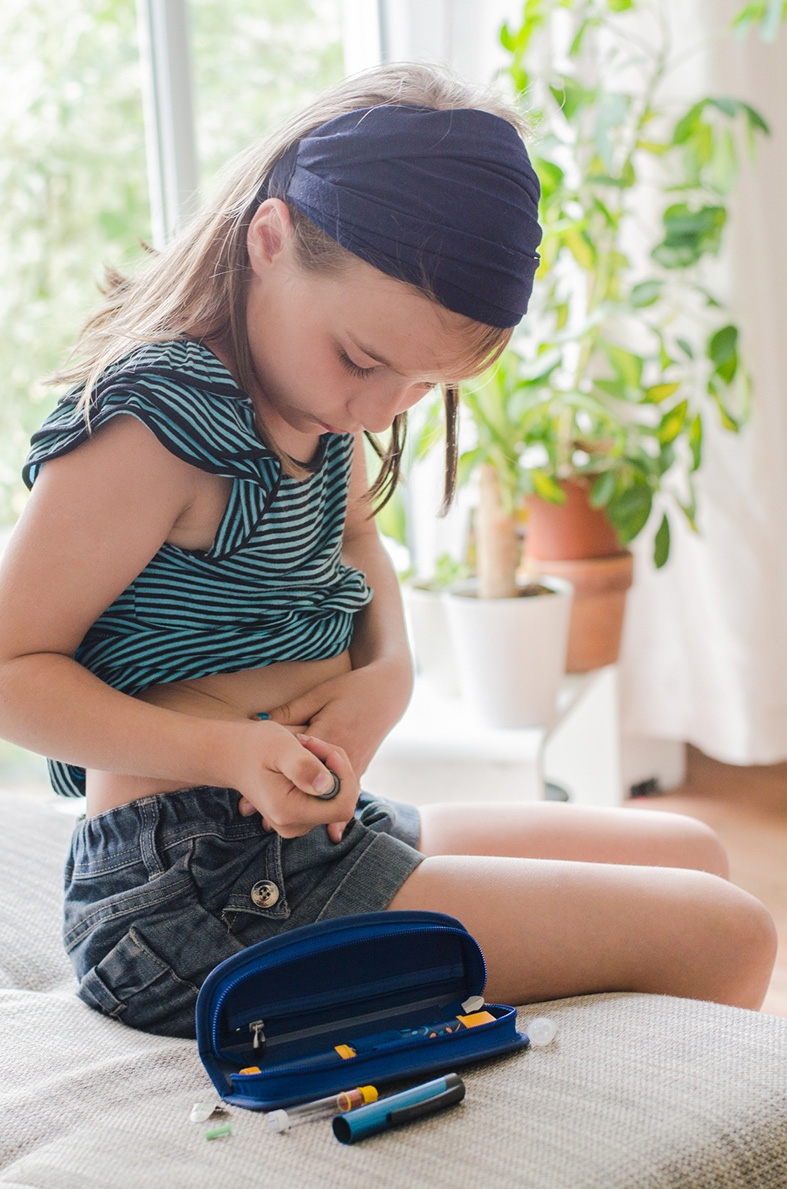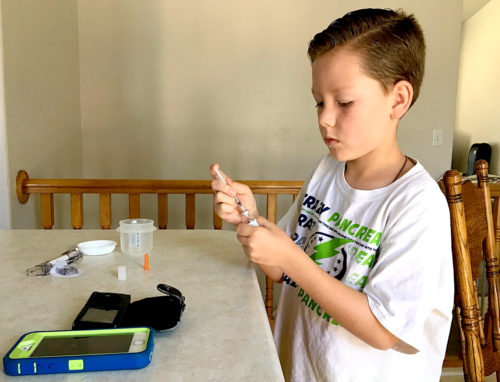Juvenile Diabetes and ProBiotics – Yogurt, Bacteria and Children
The Environmental Determinants of Diabetes in the Young (TEDDY) study holds a deep interest for me—really everything about type 1 diabetes. And has, actually, from the very first clinical years of medical school.
Service with Dr. Marv Rallison in pediatric endocrine clinic gave me many early career “firsts” which continued into leading diabetic clinics of my own during my residency and obtaining grants for early studies of hemoglobin A1C (glycosylated hemoglobin)—which eventually revolutionized care of diabetic children and has become the current mainstay of management.
Boy with type 1 diabetes (juvenile) mixing insulin for injection
Still, writing this article has given me pause on many levels not the least of which is whether the findings are actually true or not—at least applicable to the care of children.
To imply that there’s a relation, even a little, gives the impression that we have proof about something, know what causes something or know how something works. Alas… we do not!
Kids, Dirt and Disease
Does one (or lack thereof) cause the other?
You may have already noticed recently that the “pseudoscience” get-rich-quick folks have a new poster-cause for their schemes: “dirt.” Well not actual dirt per se; but, the concept of eschewing too much cleanliness.
Capitalizing on a couple of studies, with odd “new knowledge” not yet clarified about allowing the body to develop antibodies to all the detritus around us, the scammers are quick to declare “secret knowledge” about all kinds of products… which conveniently (for them) have astronomical profit margins! Especially if it’s a common problem which still defies attempts to find real solutions.
Diabetes (type I, juvenile) has for centuries defied hundreds of legitimate research studies trying to find causes and solutions. Recently, bits and pieces have slipped through its “cloaking device” and we realize diabetes has, at least in part, some relation to immunity; but, very little else.
We’re still at the stage of “casting about blindly” with superficial statistics to at least point us toward any research avenue we haven’t yet thought of—no matter how far “out of the box” and bizarre it is.

Such is the case with gut bacteria (i.e. “good” vs “bad”) and diabetes.
A massive problem to overcome however, is that even if some statistic somewhere shows that something is statistically possible (or even likely) and a study can be designed to test it—it’s 10 or more years of watching and analysis before we have any results!
TEDDY
Enter the “TEDDY” study.
The cute name about “environmental determinants” suggests that at least some people feel there may be something in the environment giving kids diabetes.
And they get that impression because it sure seems like there is more of the thing around nowadays than back when water was pure, food was “real” and air was clean—and Dr. Spock was helping raise kids rather than PBS TV.
Knowing that somebody had to do the hard thing and it wasn’t going to do itself, intrepid souls from 6 clinical centers (3 US, 3 Europe) began the massive undertaking of prospectively enrolling new infants and children born into families “at risk” for diabetes but who had absolutely no other reason to think they were anything but “normal” into a study studying… everything!
Starting in 2004, by Oct 2014 they had 7473 children in the study who had blood samples drawn every 3 months between ages 3 and 48 months, every 6 months thereafter and a nearly minute my minute record made of about everything they, their parents or their siblings did (or ate) during that time! No kiddin’!
This kind of study has been resorted to when we don’t really have anything specific to study so we, sort of, study everything before things happen in the hopes that afterwards we might just see something specific to hang our hats on and test further.
This prospective, “class action” type of study, obviously can’t have the scientific rigor that gives definitive proof of anything; but, it does have the advantage of a bit less observational and selective bias. So, it’s a legitimate technique even though very difficult to pull off, very expensive and very time consuming.
What Do We Know For Sure – Sort Of

It took medicine hundreds of years to be able to identify and begin preventing children from dying of Rheumatic Fever (heart disease) caused by the “strep bug”… and even longer to prove that it was due to the body’s own immune response against its own tissues.
Recently we’ve learned that diabetes may have a similar “auto-immune” relationship to what the “strep bug” does to the body; and we know that type 1 diabetes occurs predominantly in several genetic types; and we can now actually measure if the body has made any antibodies against its own pancreas.
We know that children are living into maturity now more than in the past and having children themselves. We know that the environment we live in today is “dirtier” (and possibly more antigenic) in many ways than in days past. We’re beginning to understand better that viruses (and even proteins) may have long-term consequences previously not thought of.
And, we do know that we’re seeing more cases now than we have in the past—for whatever reason.
What We Sort of Know – Possibly
We now think that there are “good” types of bacteria which in some way might “protect” somehow from certain diseases – or at least make them less likely or less severe; but we have no clue how yet.
And, we’re beginning to understand that antibiotics effect both good and “bad” bacteria found in the gut and can possibly change the balance between the two enough two enough to alter the “protection” the gut lining gives us against all the “bad outside stuff” that we put into our mouths.
We believe probiotics help in a variety of gut disorders; but, there is variability and we’ve found they are NOT effective for acute pancreatitis and Crohn disease.
And, we know that an infant’s gut normally matures and becomes more defensive against outside influences at 3 months of age—which is why parents normally hold feeding solid foods until that age.
So Here’s the Latest “Poop” – (Pun Intended)

As long as they had all this data pouring in from the TEDDY study, researchers looked (and found) a few differences between what was being reported in the US (Colorado, Georgia/Florida and Washington) and Europe (Finland, Germany and Sweden); namely, the habit of feeding probiotics (mostly yogurt) to infants—we largely don’t in the US and they do in Europe.
It was just too tempting to see if there were any differences and even though they had to look hard, there was—maybe.
Study infants with the HLA genotype DR3/4 (the most genetically at risk for diabetes) receiving probiotics in the first month of life had a 60% decrease in the risk for autoimmunity; within the first 3 months, about 30%; and after 3 months, no observable risk reduction.
But pay attention—of the 7473 children in the study it was ONLY those with the one genetic trait that had any benefit and not the others. And, it was only IF they had probiotics BEFORE one month of age.
WHY? That’s an even bigger mystery than before we did the study. The study, as good at it tried to be, still leaves a whole bunch of uncontrolled variables which will need to be resolved before any definitive changes to things like “infant feeding schedules” can be made.
Who Gives Probiotics To Infants?
It was the children from Finland who showed the greatest benefit. Why? Because they were the ones who more often fed 1-month olds the probiotics (52%). Germany was next with 47% of infants receiving them during the first year.
Because of previous research on the development of allergies, the US doesn’t recommend feeding any other solid food before 3 – 4 months of age so only 6% of children received probiotics in the study.
Statistics showed that more infants received probiotics if they were: a firstborn child, with an older mother who had used probiotics herself during pregnancy, didn’t smoke and breastfed exclusively for a shorter time. Also if they had diarrhea, gastroenteritis or were given antibiotics.
So What?

Probiotics are thought to promote healthy gut microbes which may control the body’s exposures to foreign “stuff” coming through the gut and therefore limit the number of immunologic responses it needs to mount.
An infant’s gut is less able to defend itself until around 3 months of age so it sort of makes sense that researchers would study what possibly might help—like probiotics.
It’s too bad that they didn’t show benefit to all children at risk for Type 1 Diabetes but it does give us a flicker of hope that there may not be the “burden of inevitability” we once thought for children with at least one genetic trait.
Treating a genetic trait and its susceptibilities by using a bacteria; well, that’s a significant game changer IF it’s shown to be really true.
Conclusion: Probiotics are safe for children, adults, and older patients (and perhaps for most older infants) but caution is advised in immunologically vulnerable populations.
There’s just too much still unproven here to make changes (yet) to existing feeding schedules or treatment recommendations because there are just too many unanswered questions; but, it just seems like we’re getting a bit closer.

